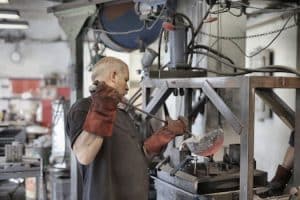Digital Heritage Platforms Showcase Global Fashion History
Fashion has always been a crucial part of human history and culture. Styles and trends that were once used to define a certain era are now being showcased on digital heritage platforms worldwide. Thanks to the power of technology, we now have access to an extensive collection of global fashion history at our fingertips. These digital heritage platforms are not only preserving our fashion past, but they are also shaping the future of fashion. In this article, we will take a closer look at how these platforms are showcasing the rich history of fashion and its global impact.
The Rise of Digital Heritage Platforms
The internet has changed the way we access information and has made it easier for us to connect with people from all over the world. Digital heritage platforms, such as Google Arts & Culture, Europeana Fashion, and The Costume Institute’s Online Collections, have leveraged this technology to create a virtual museum experience. These platforms provide access to a vast archive of fashion history through immersive exhibits, high-resolution images, and detailed descriptions.
Preserving Fashion History
One of the primary objectives of digital heritage platforms is to preserve fashion history. With the rapid changes in fashion, it is important to document and preserve the styles and trends that shaped different cultures. These platforms serve as a digital archive, ensuring that these important pieces of our history are not lost. They also collaborate with museums, fashion institutions, and private collectors to digitize their collections, making them accessible to a wider audience.
Showcasing Global Fashion History
Fashion knows no boundaries, and these digital heritage platforms are a testament to that. They showcase the evolution of fashion not just in one particular region, but on a global scale. From the intricate traditional outfits of Africa to the high-fashion designs of Paris, these platforms bring together the diverse history of fashion from different corners of the world. This global approach fosters cultural appreciation and understanding, making fashion more than just a means of clothing, but a reflection of our shared history.
Reviving Forgotten Fashion Trends
In addition to preserving the popular fashion trends, digital heritage platforms also bring attention to the forgotten and lesser-known styles of the past. Through their extensive archives, they give new life to forgotten designs and provide a platform for emerging designers to draw inspiration from. This revival not only adds a new dimension to fashion but also highlights the cyclical nature of trends.
Education and Inspiration
The fashion industry is constantly looking for new ideas and inspiration, and these digital heritage platforms serve as a valuable resource. They not only educate fashion enthusiasts about the history of fashion but also showcase its impact and influence on the current trends. Whether you are a designer, fashion student, or simply a lover of fashion, these platforms offer a wealth of knowledge and inspiration that can be further explored through their interactive features and collaborations with experts in the field.
The Future of Fashion
The digital heritage platforms are not only a treasure trove of fashion history, but they are also shaping the future of fashion. With the rise of virtual reality technology, these platforms will continue to offer a more immersive and interactive museum experience. They will also play a crucial role in documenting and preserving the ever-evolving fashion trends and styles of the present for future generations to learn from.
The Need for Diversity
As we look towards the future, it is crucial to acknowledge the need for diversity in fashion. The digital heritage platforms can play an essential role in promoting and preserving diversity by showcasing fashion history from different cultures and highlighting the contributions of underrepresented groups. They can also serve as a platform for emerging designers from diverse backgrounds, promoting inclusivity in the fashion industry.
In conclusion, digital heritage platforms are not just platforms for showcasing fashion’s past, but they are also shaping its future. They have created a bridge between the past and present, providing a global audience with a deeper understanding and appreciation for the history of fashion. With their continued efforts in preserving and promoting diversity, they will continue to revolutionize the fashion industry in years to come.










